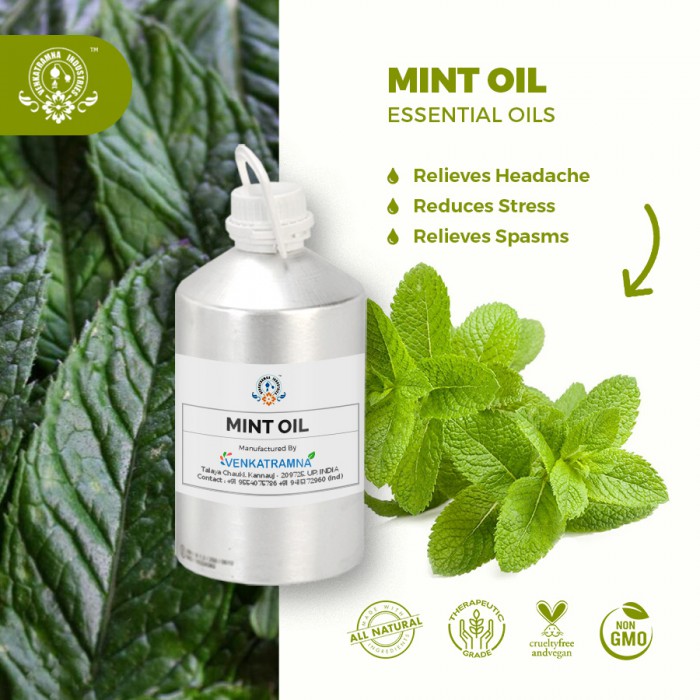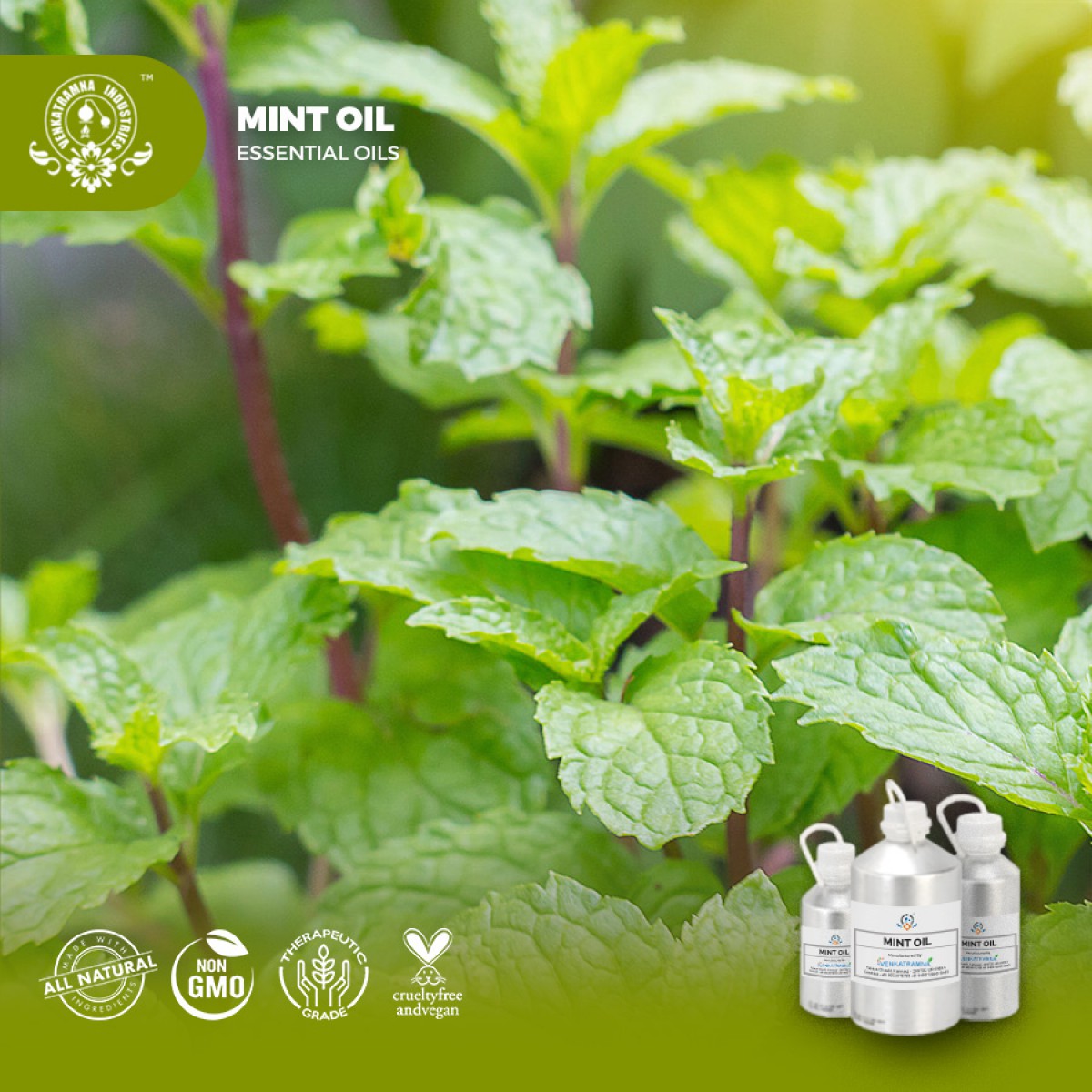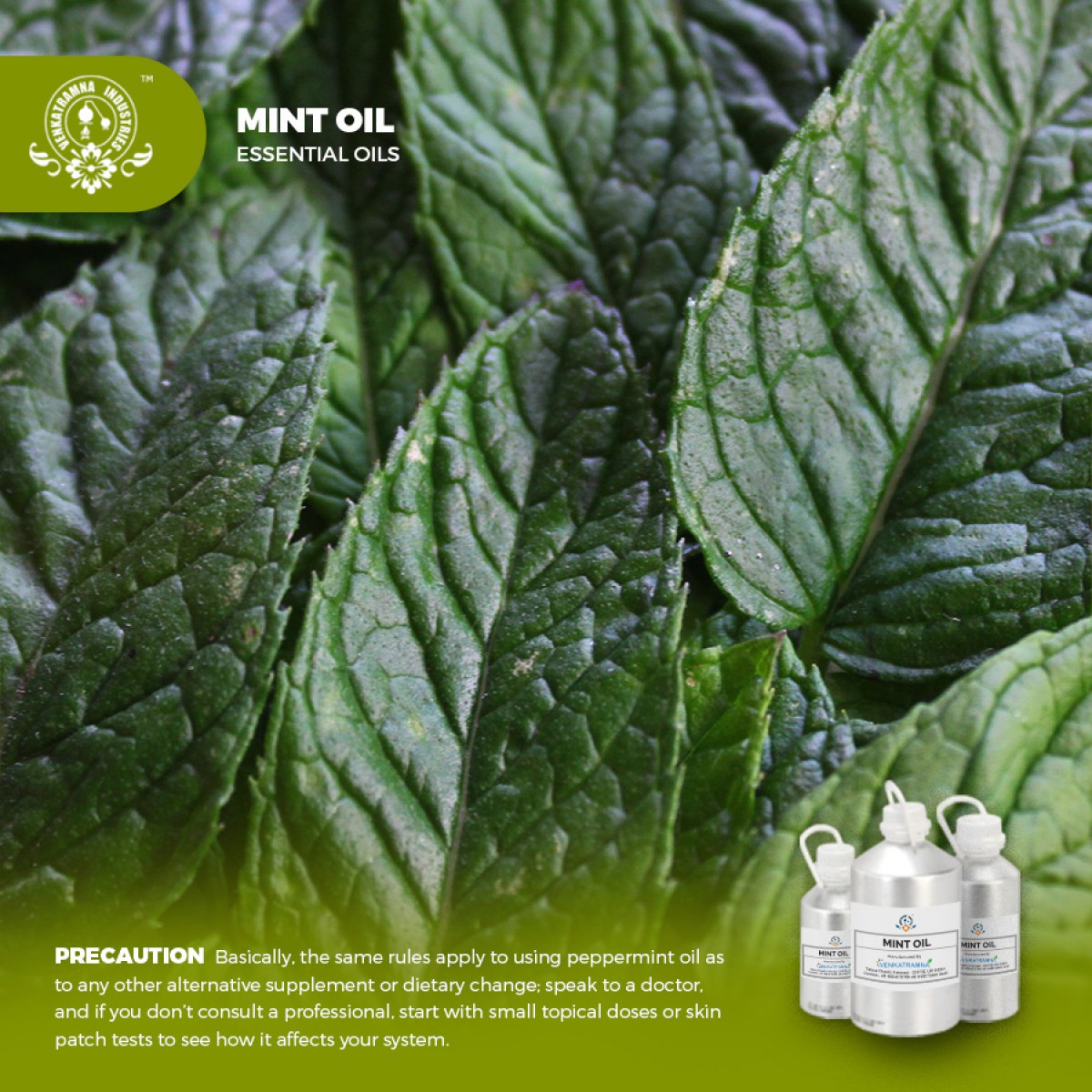Botanical Name: Mentha Piperita Common name: Mint, Pudina, Menthol Read More
|
Botanical Name: |
Mentha
Piperita |
|
Common name: |
Mint,
Pudina, Menthol |
|
Plant
family: |
Lamiaceae |
|
Genus: |
Mentha |
|
Appearance/Color: |
Colorless to pale yellow liquid having thin consistency |
|
Odor: |
Due to
the sharp and penetrating menthol scent which has high menthol contents, it
has strong aromatic category |
|
Blends With: |
Cajeput, Eucalyptus, Basil, Mandarin, Cedarwood, Rosemary,
Bergamot, Spearmint, Niaouli, Lemon, Lime, Pine and Thyme. |
|
Origin: |
India |
|
Source: |
Leaves |
|
Method of
Extraction: |
Steam
Distillation |
Mentha piperita, a sterile hybrid of the species M.
aquatica L. and M. spicata, is probably the most important
commercial aromatic herb in the world today from the standpoint of the size of
the area cultivated for oil distillation. The peppermint leaves have a
characteristic, sweetish, strong odor and an aromatic, warm, pungent taste,
with a cooling aftertaste.
Menthol essential oil is one of the most
demanding oils in the cosmetics, health and food sectors. Perks of using
Menthol oil is, it revitalizes the mind and body and gives a stimulating,
invigorating and uplifted feeling.
Among several plants, Mentha
piperita is one of the herbs most widely used worldwide, with a long
history of safe use in medicinal preparations. Its leaf is used as a remedy for
common cold, inflammation of the mouth, pharynx, liver, as well as disorders in
the gastrointestinal tract such as nausea, vomiting, diarrhea, cramps,
flatulence and dyspepsia. This plant possesses polyphenols that are highly
effective antioxidants and are less toxic than the synthetic ones. This property makes it of great interest to
the Food Industry, since the phenolic compounds retard the oxidative
degradation of lipids improving the quality and nutritional value of food. The
aim of this review is to show that several studies have demonstrated the
presence of many different chemical compounds in Mentha piperita and
their pharmacological effects. This plant has demonstrated the presence of a
wide variety of bioactive
compounds that represent a rich
resource in phytochemicals of great interest to treat several pathologies. Some
of the benefic biological effects show that this plant may play an important
role as anti-oxidant, antinociceptive, anti-inflammatory, antimicrobial,
anti-carcinogenic, antiviral, anti-allergic and antitumorigenic, indicating its
utility in the prevention or treatment of several diseases. Furthermore, Mentha
piperita is a promising plant that may offer low-cost alternative strategy
for the use in Medicine and in food industry.
The process of formulating Menthol essential oil has begun when the menthol flowers and leaves are not enough matured. This is the time when essential oil content is at its peak. Manufacturers made it usable through steam distilled methodology where the essence of menthol is prepared at apt temperature.
DISCLAIMER
The complete range of conditions
or methods of use are beyond our control therefore we do not assume any
responsibility and expressly disclaim any liability for any use of this
product. Information contained herein is believed to be true and accurate however,
all statements or suggestions are made without warranty, expressed or implied,
regarding accuracy of the information, the hazards connected with the use of
the material or the results to be obtained from the use thereof. Compliance
with all applicable federal, state, and local laws and local regulations
remains the responsibility of the user.
The FDA has not evaluated the
statements on this website. No claims are made by Venkatramna Industries as to
the medicinal value of any products from vriaroma.com or by us. The information
presented here is for educating our customers about the traditional uses of
essential oils and is not intended to diagnose, treat, cure, or prevent any
disease. You are responsible for understanding the safe application of these products.
If you have any questions, please call or email us for further information.
As per NAHA guidelines, New Directions Aromatics
(NDA) does not recommend the ingestion of essential oils. It is imperative to
consult a medical practitioner before using Essential Oils for therapeutic
purposes. Pregnant and nursing women and those taking prescription drugs are
especially advised not to use this product without the medical advice of a
physician. The oil should always be stored in an area that is inaccessible to
children, especially those under the age of 7.
Mentha
piperita is a comercially important medicinal plant yielding essential oil
i.e. used widely by cosmetic, liquor, confectionary, pharmaceutical and related
industries. The oil is generally extracted by steam distillation. Mentha after
steam distillation gives two types of waste products i.e. high boiling hydrosol
and bottom pitch which sells at very low prices for the preparation of incense
sticks. The bottom pitch waste is a thick; fatty acid smelling material and is
inexpensive.
Peppermint leaves
carry menthol-rich volatile oils as well as tannins and bitters.
Research has revealed this triad of compounds form a
digestion improving cocktail that only nature could devise. Its
oils sedate unhappy digestive tract nerves and reduce the shipment of
nausea impulses to the brain. The tannins reduce any
inflammation that might be present in the gut. The
bitters increase the production. oil of M. piperita that produce anti-cancer
activity inducing cell death, either by necrosis or apoptosis (in Caco-2 cell
line). The cytotoxicity associated with
essential oil has been attributed to various effects such as the production of
reactive species, change in fluidity and membrane permeability, tubulin
polymerization, imbalance in ion transport, and inhibition of protein function.
Peppermint oil finds wide
application in the flavoring of chewing gums, sugar confectionery, ice creams,
desserts, baked goods, tobacco, and alcoholic beverages. It is also frequently
employed in the flavoring of pharmaceutical and oral preparations.
COMMON
USAGE
·
Improves
Digestion
·
Dental
Care
·
Nail
Care
·
Relieves
Headache
·
Reduces
Stress
·
Relieves
Spasms
·
Treats
Urinary Tract Infection
·
Treats
Respiratory Problems
·
Reduces
Pain
·
Boosts
Immunity
·
Improves
Blood Circulation
·
Hair
Care
·
Skin
Care
Ingredients:
|
S.No |
Key Constituents |
Strength (%) |
|
1 |
Piperitone oxide |
50.8 |
|
2 |
Germacrene D |
12.7 |
|
3 |
Piperitenone oxide |
10.3 |
|
4 |
Carvone |
4.1 |
|
5 |
b-Caryophyllene |
4.1 |
|
6 |
1,8-Cineole |
4.0 |
|
7 |
(þ)-Limonene |
2.1 |
|
8 |
(Z)-b-Ocimene |
1.6 |
|
9 |
Viridiflorol |
1.4 |
|
10 |
b-Pinene |
1.1 |
|
11 |
b-Myrcene |
1.0 |
Safety Summary
·
Hazards: Not
known.
·
Cautions: Not
known.
Organ Specific Effects
·
Adverse skin reaction: No information found for
either wild forest mint oil or piperitone oxide.
·
Systemic Effects
·
Acute Toxicity: No information found.
·
Antioxidant/pro-oxidant activity: Mint oil
significantly scavenged DPPH and OH radicals
·
Carcinogenic/anti carcinogenic potential: No
data found for mint oil or piperitone oxide. The oil contains no known
carcinogens.
·
Mobility: The product is insoluble in water.
·
Dispose of in compliance with all local and
national regulations.





 PS-Mentha_spearment1.pdf
PS-Mentha_spearment1.pdf




